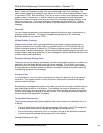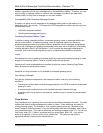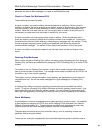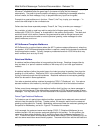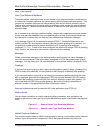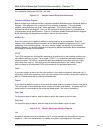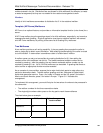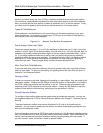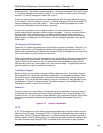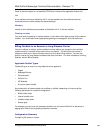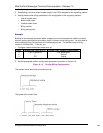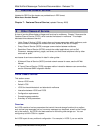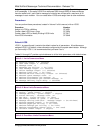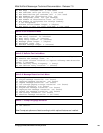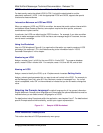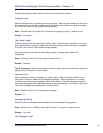
Mitel NuPoint Messenger Technical Documentation - Release 7.0
Here is an example of what a caller would hear: “You have reached Ivy Dormitory, room 18” (a
custom greeting). Then follows a standard greeting: “To leave a message for Cindy Jones, press
1. To leave a message for Laura Smith, press 2.” If a user does not record a name, the prompt
would be: “To leave a message for mailbox 203, press 3.”
A user of a shared extension mailbox would be prompted to enter the same digits when logging
in, for example, “Hello Ivy Dormitory, room 18. To retrieve messages for Cindy Jones press 1, to
retrieve messages for Laura Smith, press 2.” Then the user would be prompted with a name
confirmation, and asked for the child mailbox’s passcode.
If a user moves to another room or telephone station, you can transfer the child mailbox to
another shared mailbox extension without losing any messages. To do this, you would remove
the child mailbox from distribution list 01, and add it to another shared mailbox extension’s
distribution list. Then you would change the child mailbox’s distribution list to point to the new
parent mailbox. All settings for the child mailbox, such as messages, greetings, name, etc. will
remain intact.
NP Receptionist Considerations
Feature bit 121 (Define tree mailbox) lets a child mailbox also be a tree mailbox. Feature bit 141
(Define chain mailbox in NP Receptionist) allows a child mailbox to act as a chain mailbox. In
addition, with these feature bits included in the mailbox’s FCOS, NP Receptionist can route a call
from a chain mailbox to a tree mailbox and vice-versa.
Callers can bypass the single-digit tree options if they want to enter an extension number instead.
In the greeting of the tree mailbox, tell callers they can press # to bypass the single-digit tree
options. Be sure to tell callers that they can press # only while the greeting is playing; at any
other time during the call, if callers press #, they will be disconnected. The greeting should also
state that callers can reach an attendant by pressing 0.
Tree Mailbox Diagram
Before configuring a tree mailbox, complete a Mailbox Worksheet and a Tree Mailbox Diagram.
Each diagram entry is explained in the following paragraphs. Pre-programmed (default) values
for entries are given, where applicable. If you want to use a default value, indicate that fact on
the diagram. Then you will not need to select or enter any information for that parameter during
reconfiguration. Figure 6-12 shows a sample Tree Mailbox diagram. A blank Mailbox Group
Worksheet is located in Volume 2 of this manual.
Mailbox No.
Enter the number of the tree mailbox in the topmost box on the worksheet. Enter the number of
all mailboxes that are members of the tree mailbox’s distribution list 01 (child mailboxes) in the
remaining boxes. For every mailbox number identified in the Tree Mailbox Diagram, there should
be a corresponding Mailbox Worksheet completed (see “Mailbox Worksheets” later in this
chapter).
Figure 6-12 Sample Tree Mailbox
FCOS
A The FCOS assigned to a child mailbox determines itsrelationship to the tree mailbox and also
determines how it is used. For example, FCOS 15 (Tree) or a customized equivalent enables a
tree mailbox; FCOS 17 (Rotational Mailboxes) or a customized equivalent enables branching to
another mailbox; FCOS 6 (Greeting Only) or a customized equivalent enables the mailbox to give
the caller information then hang up; FCOS 1 (Unlimited) allows the mailbox to play a greeting
©
Copyright 2002, Mitel Networks Corporation 104



